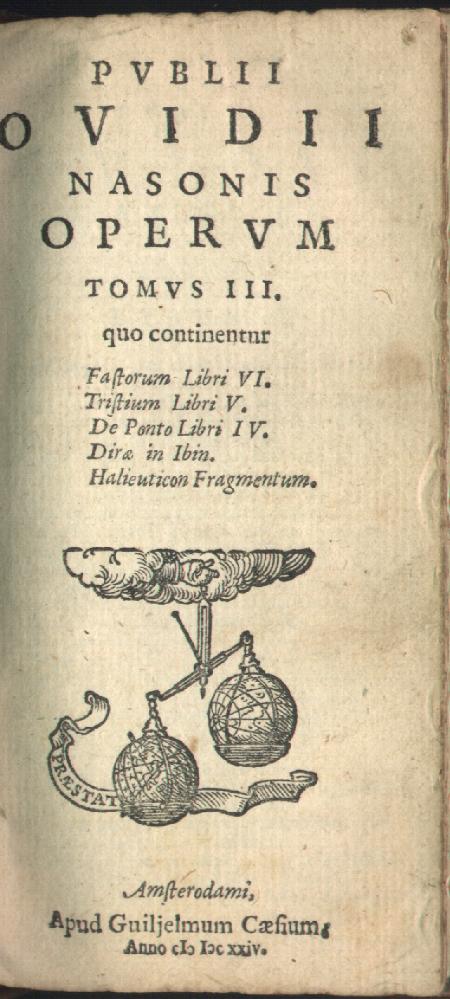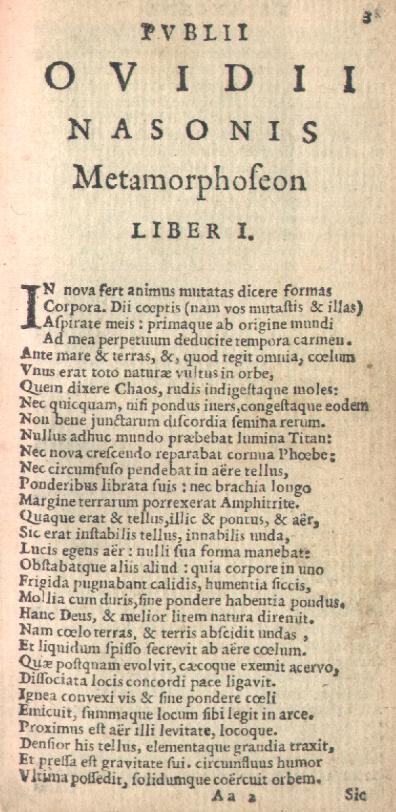Text Facsimiles
Shown below are some examples of pages from sixteenth and seventeenth century books. There are 13 copies extant of the 1609 Quarto of Shakespeare's Sonnets, held in libraries in the UK and America. Owing to their value and rarity they are not generally available to the public, although scholars are usually granted access to them. Modern editions do make changes, mostly by modernising spellings, but it is often difficult to digest the bulky annotations which are necessary to record each diversion from the source text. For those who wish to consult the first printed edition, which in the case of the sonnets is the 1609 Quarto, the best bet is a facsimile version. These are readily available in two modern editions, those of Stephen Booth and Helen Vendler, and a full facsimile version by J.M. Osborn. See notes for full details.
I cannot reproduce exactly the 1609 Quarto, as I do not have direct access to it. However I have attempted to give a version which is fairly close to the original with the commentary attached to each sonnet. Readers may judge for themselves how close the html copy follows the original by consulting the examples below. It is from a photo-copy of the original of Sonnet 1 from the Thomas Thorpe printing of the 1609 Quarto.
FRom faireſt creatures we deſire increaſe,
That thereby beauties Roſe might neuer die,
But as the riper ſhould by time deceaſe,
His tender heire might beare his memory:
But thou contracted to thine owne bright eyes,
Feed'ſt thy lights flame with ſelfe ſubſtantiall fewell,
Making a famine where aboundance lies,
Thy ſelfe thy foe,to thy ſweet ſelfe too cruell:
Thou that art now the worlds freſh ornament,
And only herauld to the gaudy ſpring,
Within thine owne bud burieſt thy content,
And tender chorle makſt waſt in niggarding:
Pitty the world,or elſe this glutton be,
To eate the worlds due,by the graue and thee.
Two consecutive pages of the 1609 quarto, showing the repetition of the title page ascription to Shake-speare.
From the above it may be seen that a web version of the sonnets may be made to follow the original fairly closely, even though the letter size and lineation is not exact. Certain features cannot be copied, most notably the various ligatures, as for example the 'ct' of contracted. The elongated 's' is taken from a ‘Word’ symbol font. Its appearance on individual screens will depend on the capacity and settings of the browser used to read the page.
For a further taste of what 17th century books looked and felt like I give here some examples, using colour reproduction, as the black and white images usually available are not always a very satisfactory counterfeit.
This book was published in 1654, forty five years after the 1609 Quarto of the sonnets. But it has the charm of containing many items supposedly written in Shakespeare's day. The styles of printing are much the same as they were in 1609, and the extracts below give a good idea of printing of the period.
The first page of the introduction to the Cabala. It is slightly larger than the original which is 4.2 in. or 10.7 cm. wide. This is a black and white scan of the page, whereas the ones above and below use colour.
The Stationers were the printers, as may be gathered from this description by Stow: 'Pater noster makers of olde time, or Beade makers, or Text Writers, are gone out of Pater noster Rowe, and are called Stationers of Paules Church yarde'. John Stow Survey of London, 1598, 1603.
The Stationers Company was icorporated in 1557 and controlled book production in Elizabethan England.
A letter supposedly written by Anne Bullen to Henry VIII when she was imprisoned in the Tower. The printers (stationers) make the following claim
"Of these letters we may safely be believed, though they come out thus late, and are so little known, their merit will easily weigh down the age and fame of those which have gone before."
Slightly larger than original size.
(The heading at the top of the second page refers to the letter which follows it in the book.)


Two pages from a copy of Ovid’s Metamorphoses, a work which, in Golding’s translation, much influenced Shakespeare. Published in Amsterdam in 1624, by William Caesium.
The great publishing centres in Europe in the 16th and 17th centuries were situated in Amsterdam, Antwerp, Geneva, Leyden, Paris and Venice. English book production of the period was generally much inferior to that of Europe. All of the classics were printed abroad, apart from basic school text books, and booksellers had to import them to satisfy the (somewhat limited) demand.